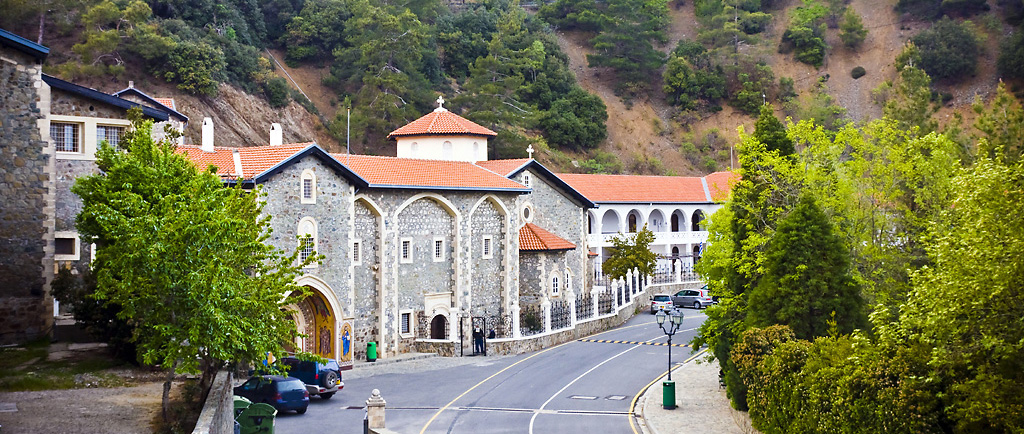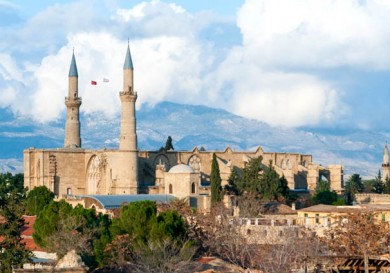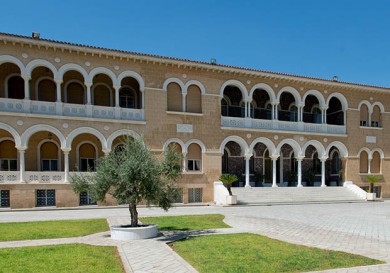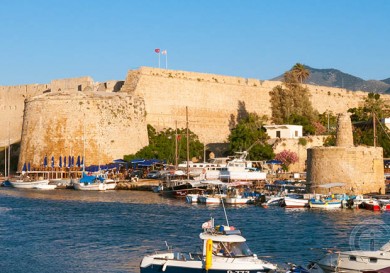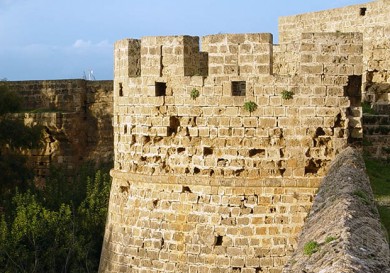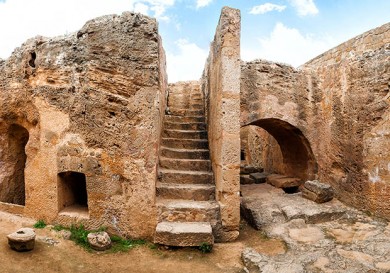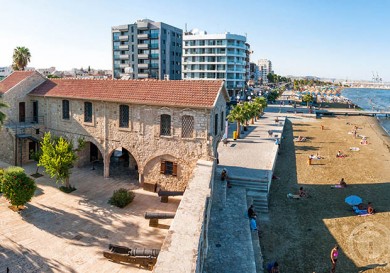History of Kykkos Monastery
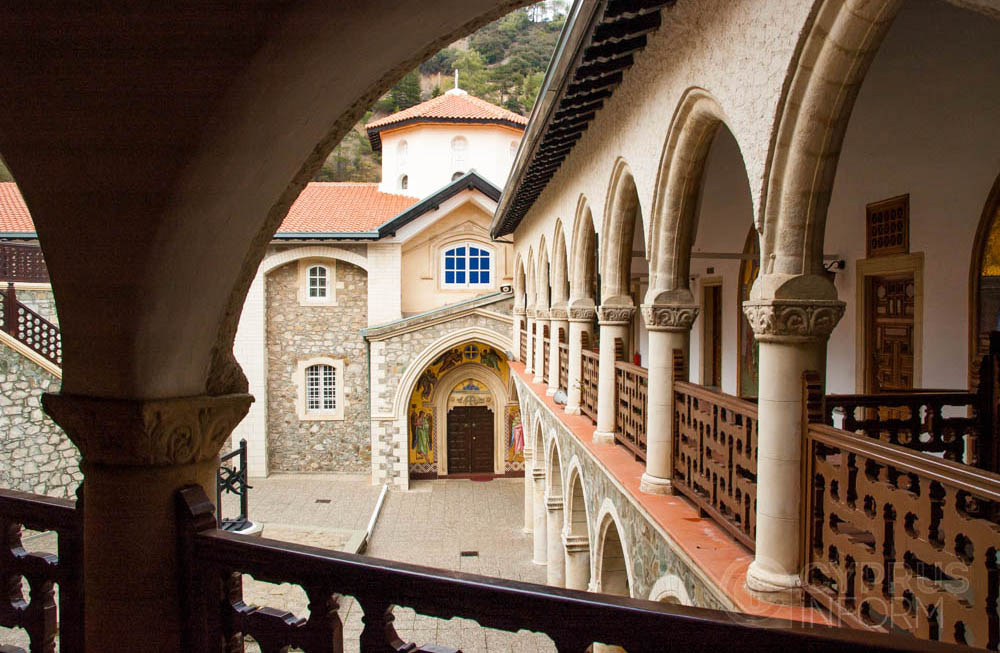 The history of Kykkos Monastery dates back to the 11th century, when it was built in the heart of the Troodos Mountains in honour of the icon of the Virgin Mary, painted by the Apostle, Luke.
The history of Kykkos Monastery dates back to the 11th century, when it was built in the heart of the Troodos Mountains in honour of the icon of the Virgin Mary, painted by the Apostle, Luke.
The icon was originally kept by one of the Christian communities in Egypt and then transferred to Constantinople. Once it was delivered to Cyprus, and with patronage provided by Emperor Alexios Komnenos (1081 – 1118), a church was built to house what is known as the icon of the Virgin Mary.
The legend of the Monastery’s creation
The Byzantine Governor, Manuel Boutoumites, got lost in the forest while hunting one day. After wandering around for some time he eventually came across an old hermit, Isaiah, who lived in a cave on the Kykkos Mountain. Isaiah wouldn’t help though, and Manuel became angry and struck the hermit.
Shortly after returning to Nicosia, Manuel fell ill with Lethargia and, remembering how he’d treated the hermit, he asked God to cure him so that he could go and personally ask Isaiah for forgiveness, but God revealed that everything had been divine will, and that Boutoumites should collect the icon from the Emperor of the imperial palace in Constantinople, and deliver it to Cyprus.
This was no easy task, but the Emperor’s daughter had also fallen ill with the same ailment that had struck Boutoumites, and so he used this opportunity to see the Emperor and tell him that she would be cured if the icon was sent to Cyprus.
In his grief the emperor felt he had no option but to agree, and as promised his daughter recovered.
Due to the fact that the Kykkos Monastery was built by imperial decree and with resources from Alexius Comnenos, it received a ‘royal’ title. After several fires, the structure has undergone many changes and has been rebuilt in wood and stone. The bell tower, with 6 bells, was built in 1882 (banned during Ottoman rule on the island). The largest of them was made in Russia and weighs 1,280kg.
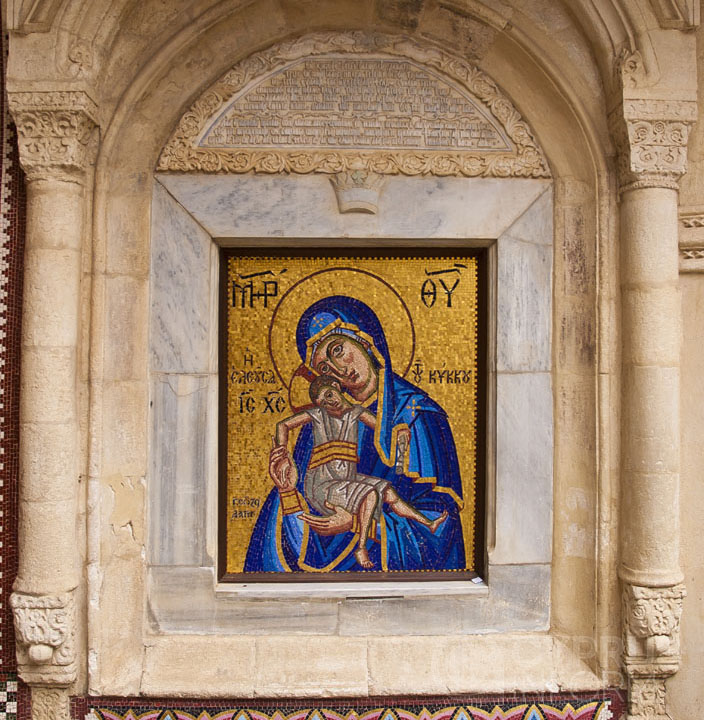 Kykkos Icon of the Theotokos
Kykkos Icon of the Theotokos
The icon is famous for its healing properties and many miracles are attributed to it. The icon is kept covered as it is said whoever looks at it will be blinded.
When Cyprus experienced drought due to a long absence of rain, the monks uncovered the icon, lifting her face to the sky and, while reading a prayer, carried it three times around the temple. The long-awaited rains came a few weeks later. Many pilgrims also visit, couples having trouble conceiving or those hoping for a cure.
The icon, at the centre of the alter, is in a silver frame and has been covered since 1795. The church itself seems to be imbued with a special atmosphere.
Kykkos Friary
Nowadays the Monastery is home to approximately 30 monks, otherwise known as brethren or conventuals, and the symbol is the bee, signifying hard work and diligence.
If a pilgrim wishes to attend confession, and after speaking with the priest, he may be allowed to stay overnight and attend the morning church service.
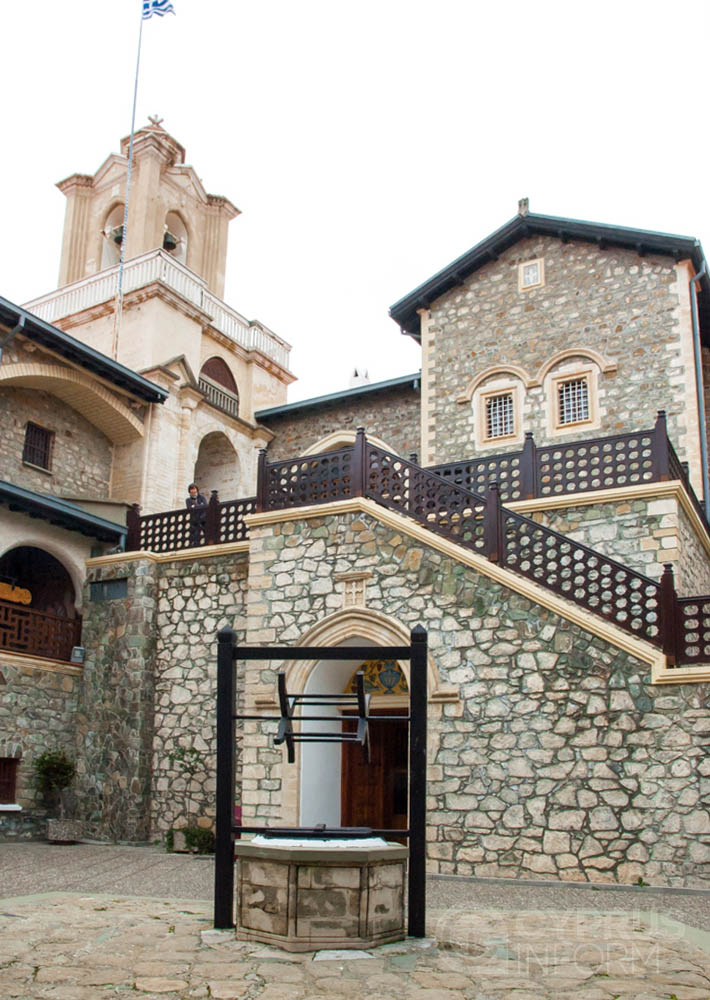 The Architecture
The Architecture
At the monastery there are several buildings. In the centre is the church itself, and around it are various buildings such as:
- Rectory;
- Cathedral;
- monks’ cells;
- library;
- museum;
- reception halls;
- paved courtyard and well;
- shop with souvenirs and icons;
- wine shop with sanctified tinctures, Cahors and the famous Cypriot wine, Commandaria.
Kykkos Friary in Cyprus is open for tourists and pilgrims from May to October from 10:00 to 18:00, and from 10:00 to 16:00 in the winter.
Where is Kykkos monastery?
Getting to the Kykkos monastery, which is located at an altitude of about 1140 m above sea level, from Limassol takes 1½ – 2 hours if you follow the signs to the Troodos Mountains. Along the way, be sure to stop at the observation deck to enjoy the spectacular views. Here the temperature will be 5-7 degrees lower than in the city.
The Kykkos Monastery and its shrines offer a spiritual feel, and here the history and the culture of the island are intertwined. This will certainly be a trip you will remember for years to come.




